DEBORAH CROMBIE: Marcia Talley was one of the very first friends I made in the mystery writing world--at my first Malice Domestic, in fact. Although her first Hannah Ives novel, SING IT TO HER BONES, was published a couple of years after my first novel, she has now beaten me to #20 in her series, with CIRCLES OF DEATH!
But I am celebrating right along with her, because sitting down with a new Hannah Ives is like a get-together with great friend you've been longing to see.
MARCIA TALLEY: Whenever I turn in the final manuscript of a novel, I pour myself a congratulatory glass of wine, sit back and start to worry that I’ll never come up with a good idea for the next one. About two weeks into this worry-fest for my twentieth Hannah Ives mystery, I met Donna Cole through mutual friends. Donna is the multi-award-winning investigative reporter whose dogged reporting on the death of thirteen bald eagles on Maryland’s Eastern shore in 2018 brought global attention to a ‘dirty little secret’ that I’ll get to in a moment.
And Donna lives in my neighborhood! She is the U.S. Navy veteran, bird of prey rescuer, wildlife photographer, breast cancer survivor, neighbor and friend who inspired and informed my novel. You can keep up with Donna (but you’ll need track shoes!) at https://www.annapoliscreative.com
Anyway, we got together, and Donna introduced me to RSAs--Reserve Shooting Areas--farmland that is set aside as hunting preserves where outfitters are permitted to bring city slickers in on excursions to blow the smithereens out of ducks that have been raised specifically for that purpose.
In order to control predators that take a toll on their stock, some unscrupulous RSA managers have resorted to the use of carbofuran, a poison so deadly that less than a quarter-teaspoon can kill a human. And it’s not just the intentionally poisoned predators we have to worry about. Secondary fatal poisonings of domestic and wild animals often occur, specifically raptors (bald eagles and golden eagles), domestic dogs, raccoons, vultures and other scavengers who happen to feed on the carcasses of poison victims. I’ll let my character, Natural Resources Police officer Roger Erickson, explain:
‘We call
it the Circle of Death,’ Roger continued after a moment. ‘A deer is poisoned
with carbofuran and dies. A coyote feeds on the carcass of the deer and dies. A
fox feeds on the poisoned coyote, walks one-hundred yards away, and dies.
Because the fox received a lower dose, it might travel five or six hundred
yards before succumbing. A bird that feeds on the dead fox might manage to fly
half a mile before dropping out of the sky.’ He paused, removed his hat and
tucked it under his arm, then wiped the sweat off his forehead with the back of
his sleeve. ‘The circle of death keeps moving outward. Last year we had a case
where there was a five square mile radius where we kept finding dead animals.
The crime scene kept getting bigger and bigger. And I’m quite certain we never
found them all.’
Carbofuran
has been banned in the U.S. since 2009.
In Maryland it is illegal to
buy, sell or use it, but not (go figure!) to own it. Who knows how much of the deadly stuff is
still stashed away in barns out there? So,
it seemed natural that Hannah, who has a vacation cottage on Maryland’s eastern
shore, would end up discovering carbofuran on the farm adjacent to her property
where she and her young friend, Noel, are investigating the poisoning of four
bald eagles.
For me, researching a book is half—maybe even more than half!—the fun. While researching Circles of Death, I became fascinated by the people, like Donna Cole, who rescue sick and injured raptors—sometimes risking their own lives and limbs to do so—and transport them to raptor rehabilitation centers. I was grateful to be granted the unusual opportunity to tour Owl Moon Raptor Center, where I shadowed rehabilitators Suzanne Shoemaker and Malia Hale for half a day while they cared for sick and injured raptors. Owl Moon rescues, rehabilitates, and reconditions raptors with the goal of returning them to the wild. It is totally staffed by volunteers and supported by private donations. https://owlmoon.org.
As fans of Hannah know, over the course of the last
three novels, she has been using her skills as a forensic genetic genealogist
to solve cold cases with a team calling themselves the Silent Sleuths. It was fun reuniting the team for this novel:
investigative journalist Izzy, who leaps at the opportunity to cover the
poisoned eagle story; retired police officer, Jack, whose marriage is falling
apart; and Navy chaplain, Mark, who is presiding over the Christmas pageant
from hell. Together, they unravel a murder nearly three decades old and, in the
process, help Noel find her roots.
DEBS: This line in Marcia's essay popped out at me: "So, it seemed natural that Hannah, who has a vacation cottage on Maryland’s eastern shore, would end up discovering carbofuran on the farm adjacent to her property where she and her young friend, Noel, are investigating the poisoning of four bald eagles."
Because of course it did, and this is why Hannah is always so appealing as an amateur sleuth. It's her combination of natural curiosity, her interest in people, and her talent at research that bring the reader right along with her in every book.
Here's a question for readers from Marcia: In my first draft of Circles of Death, 3 of the 4 eagles died. I was encouraged to cut back to one dead bird, with 3 of the eagles very sick. I was OK with that—and it worked out well, plot wise—but it occurs to me that we write about murder—people die right and left in our novels —and yet we sometimes get more pushback whenever an animal is killed, and even more if the victim is a dog or a cat. Would you have made the same decision on the eagles?
And more about CIRCLES OF DEATH:
Hannah Ives and her husband are staying at their idyllic vacation cottage on Maryland’s eastern shore, when a young friend, Noel Sinclair, stops by for a visit. As Hannah shows Noel around the property, they notice some bald eagles in a neighboring cornfield who look seriously ill.
Could these magnificent birds have been poisoned? Hannah’s investigation soon clashes with powerful commercial agricultural interests. Meanwhile, Noel uncovers some shocking news of her own when she and her sister receive the results of their DNA tests. As Hannah tries to discover who is tormenting the birds while delving into Noel’s family tree, the last thing she expects is a deadly connection between the two…
Severn House
ISBN: 978-1-4483-0797-5
Kirkus says: “Two mysteries plotted with an eye for the details of both subjects set this series apart.”
Marcia Talley is the Agatha and Anthony award-winning author of twenty mystery novels featuring Maryland sleuth, Hannah Ives, including CIRCLES OF DEATH, DISCO DEAD and DONE GONE. She is editor/author of two collaborative serial novels, NAKED CAME THE PHOENIX and I’D KILL FOR THAT set in a luxury health spa and an exclusive gated community, respectively. Her short stories appear in more than a dozen collections and have been reprinted in many best-of-the-year crime story anthologies.
Marcia is past-president of Sisters in Crime, Inc. and currently serves on the National Board of Mystery Writers of America. She divides her time between Annapolis, MD and a quaint, Loyalist-style cottage on Elbow Cay in the Bahamas.











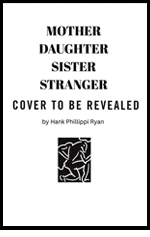
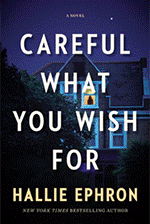
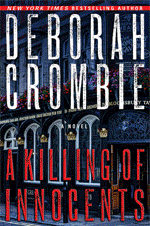
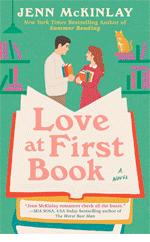
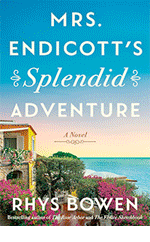

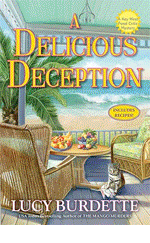
This is fascinating, Marcia . . . and cheers for those like Donna, Malia, and Susanna who are helping the raptors. Congratulations on your newest Hannah book . . . I'm looking forward to reading "Circles of Death" and discovering how it all turns out . . . .
ReplyDeleteI don't quite understand the pushback when animals are killed in an unfolding story, but I suppose it's a good thing people care about animals, even the fictional ones. However, I might have let the three eagles die simply to make a statement about the severity of the poisoning problem . . . .
Yes, they are heroes! Volunteers who work extremely irregular hours with no government funding!
DeleteTo answer your question, I don't know that I'd make the same decision on the bald eagles. But I've noticed this before. I'm okay with all the human deaths in the books I read, but not so much the animals.
ReplyDeleteCongrats on book 20! That's a huge accomplishment.
Thanks, Mark. I look at them all spread out on the shelf and think, no way!! As my granddaughter says, that's lots of words!!
DeleteWhat wonderful work those people do. I have a special place in my heart for eagles, so I'm glad you kept three fictional ones alive! Congrats on book #20 - I'm looking forward to reading it.
ReplyDeleteEagles are magnificent birds! The title, Circles of Death, also alludes to the mating ritual of eagles, a kind of "sky dancing". I'd seen only videos before, but this winter, while sailing down the intracoastal waterway near Sapelo Island, Georgia, I witnessed eagles doing this in the wild. It was breath-taking.
DeleteCongratulations on the new book, Marcia! And yes, I'm so glad to hear three of the eagles were saved, even if they're fictional. I'm one of those who don't bat an eye when authors kill off humans, but I weep when an animal suffers and/or dies.
ReplyDeleteWhy?
DeleteBecause animals are usually innocent or are doing what Nature says they’re supposed to do. Humans, on the other hand, have wrought havoc on the natural world. Simplistic, perhaps, but that’s my analysis as to why we can handle human deaths in our mysteries, but not animals — or children. — Pat S
DeleteMARCIA: Congratulations on your newest Hannah Ives book. I am a long-time reader of your series.
ReplyDeleteThat "circle of death" sounds horrible. Too bad it's based on reality, and not from your imagination. One dead eagle and 3 sick ones were more than enough to get the point across about the deadly effects of carbofuran.
Thank you for being a Hannah fan, Grace!!
DeleteBook 20 - wow: Congratulations on that publishing milestone, Marcia! The death of an innocent animal always hits hard. We seem to be hardened to the death of humans on the page, even if they are equally innocent in the plot. That's an interesting thing to ponder...
ReplyDeleteYay, Marcia, another new book under your belt and it sounds terrific. Yes, I'm glad about the eagles' reprieve too, and what an important subject to choose, congratulations, Joyce W.
ReplyDeleteOne death instead of three makes the book a little more hopeful. We and nature can use more hope!
ReplyDeleteWhile I understand the attachment that people have to animals, I'll never grasp how some mystery readers will not read something where an animal dies.
ReplyDeleteEverything that's ever lived has died and everything alive is going to die (thank you George Carlin), so to pretend it doesn't happen to animals seems a bit much.
Deciding to kill just one of the bald eagles is fine. But if you had stuck to killing four of them, it would've been fine as well. It would've enhanced the situation and the need to find out just "whodunnit" that much more.
I'm not in favor of killing off a flock of the birds or anything but I'm fairly sure that more than one animal has died at a single time throughout the course of history.
Sadly, you are right, Jay. Some eagle kills on Maryland's eastern shore have been in large groups--often as many as thirteen at a time. It's heartbreaking.
DeleteThank you Jay! Wonderful on point comment. I guess the “cozy” readers are living in their own reality.
DeleteGiven how “casually” mass shootings of humans pass through the reality news, it seems artificial to be concerned about the killing of animals in fiction. For me this topic is too deep for the forum we have at Jungle Reds. Elisabeth
DeleteIt''s the warmth and humanity of Marcia's books that sets them apart. They may eradicate the odd villain, but they give us so much back. Can't wait to read this one.
ReplyDeleteThank you, Alan ... and I can't wait to see what Flavia is up to next! Write faster!!
DeleteI'm with Jay. It's mystifying to me. Especially today, when in some ways human life seems so cheap to so many. That said, there is a real, urgent crisis in how much human pressure is already harming and killing wildlife wholesale, without deliberate acts to do so. And without the non-human lives on this planet the human ones are just marking time until we are next to go. We can't all fit on whatever planet the bajillionaires think they're going to when we destroy this one.
ReplyDeleteIt's been 62 years since Rachel Carson's Silent Spring was published, but we are still allowing harmful chemicals to drastically affect life on Earth. How foolish of us. Thank you for illustrating the consequences, Marcia.
Karen, there was a case in Maryland recently of unintentional poisoning. A doctor driving home from work saw an injured deer on the side of the road and used a drug he had with him to put the animal out of its misery. But he didn't call animal control, so predators came and were affected by the anesthesia used to euthanize the deer. Ack!
DeleteThat's heartbreaking. We had a red fox coming to our yard a couple years ago, clearly very sick. I wish I knew what happened to it.
DeleteKaren, you wrote it so much better than I. Thank you. Elisabeth
DeleteCongratulations on your latest release! Yes, you made your point with one dead eagle. Lots of what I think are red-tailed hawks around suburban Cincinnati this week, including their half-eaten kill dropped in my yard. The woods are alive with the distress calls of birds and roving murders of crows. Add aggressive coyotes during mating season and it's chaos out there.
ReplyDeleteCongratulations, Marcia. Wow, the talons on that bald eagle!
ReplyDeleteI'm glad the fictional eagles got a reprieve, but I don't think I'd stop reading if all four of them died.
Eagles are HUGE! I was totally unprepared for that. This photo is Cyrano, a male--the female would be about ⅓ larger!
DeleteThe females are larger? I did not know that.
DeleteSo interesting to me, Marcia. I need to read your book!
ReplyDeleteI have been stalking our neighborhood red-tailed hawks at my neighborhood golf course the last few years, as well as occasionally seeing bald eagles and coyotes. I have a couple of neighborhood friends who are even more obsessed than I am. Last summer, one red-tailed chick grew to adult hood and fledged. We were overjoyed and followed it around (easy to find because it was very noisy). My friends named the youngster Chinook. One afternoon they found Chinook on the ground, looking very sick. They ran home and called the local Audubon (they only bird rescue in the area) and were told to put the bird in a box and bring it in. When they got back, Chinook had died. Being obsessive, they were worried about Avian flu, so they took the body to Oregon Fish and Wildlife for testing. It came back negative for flu, so my friends started asking the golf course (they talk to the groundskeepers there all the time) about what chemicals and how much are used there. We have no real answers. The daddy hawk seems to have disappeared, but mama E/J (she's tagged) is still around. We are not sure what will happen this spring.
Re the number of dead bald eagles--however, distasteful, more than one dead bird would be more realistic and impactful. So sad, they are beautiful creatures and an opportunity to watch them fills me with joy.
Oh, I'm so sad to hear about Chinook! One of the interesting facts I learned at Owl Moon Raptor Center is that they rarely name birds they think will be returning to the wild, only the ones that may have to become "ambassador birds" because their injuries (like a broken wing or a damaged beak) make them unable to care for themselves. Cyrano, pictured above, had a beak badly injured by fishing wire which was repaired by a dentist (!) using the same compound he would have used on humans, colored with yellow hi-lighter!
DeleteInteresting about the names! There's a famous eagle couple in California, Jackie and Shadow with a great nest cam. Other eagle cams only use numbers for the reason you described--they're wild birds and we shouldn't think of them as pets. I'm not sure it would make a difference to me. Our red-tail parents came with their names--E/J and Y/T had both been captured at the airport, tagged (bright orange tags under each wing) and relocated hundreds of miles away. Somehow they found each other and settled here (less than 10 miles from the airport)
DeleteI think it's fairly common for nesting pairs being observed by cams to be given names, like the pair at the National Arboretum, Mr President and Lotus (Lady of the United States). Hannah has a pair nesting on the creek near her cottage--she wanted to name them Sony and Cher, but her grandson chose Calvin and Hobbes. They are characters in the novel, too! LOL.
DeleteThere is a nesting pair of eagles less than two miles from our home, named Bonnie and Clyde. There's a webcam on the nest, and it captured them in the process of making eaglets, very exciting!
DeleteThe cams are fun! Jackie and Shadow are at Big Bear Lake, Ca and this week they have endured a major snow storm. Jackie stayed on the nest for 61 hours and 58 minutes straight. They are incubating 3 eggs.
DeleteGillian, three eggs is amazing! Two is more normal. Go Jackie! And Karen, love Bonnie and Clyde. Other nesting pairs I've heard of are Ike and Mamie; Liberty and Belle; Liberty and Justice. But, don't sponsor a naming contest, for heaven's sake, or you'll end up with Eagle McEagleface. (True story.)
DeleteEagle McEagleface is as unimaginative as my grandson was when he was little and naming his stuffed toys. He had Teddy, Beary, Sharky, Whaley, Puppy, and so on.
DeleteMarcia, I would have been fine reading that several eagles had been killed in order to make the deaths more suspicious. Then, you do need to have a sick eagle, in order to introduce the rehab people, although, according to what I read above, this particular poison doesn't sicken, it kills.
ReplyDeleteI agree with everything Karen wrote about poison and our planet. It is infuriating that people are allowed to use so many types of poison in our environment. Every one of my friends and family members who have had cancer of any form, place part of the blame for their illnesses on what we have done to our planet and how their contact with poisons have affected their health.
If the dosage is low enough, eagles who injested carbofuran (especially second-hand) can be saved through a process called "gavage"--basically stomach pumping--and medication. Doctors would treat human victims similarly. The pellet form of carbofuran is specially dangerous because birds mistake it for seed . . . ugh!! Truly evil people mix liquid carbofuran into cans of tuna and leave it out as bait for the foxes, etc.
DeleteThank you!
ReplyDeleteYup. Save the birds. Let them get really sick but not dead. I'm surprised they let you get away with killing even one of them. It's the genre. Readers are ok with dead grownups but not dead cats or dogs or ... I feel that way about dead (or even harmed/threatened to be harmed) children in mystery novels. Knowy our readers, I guess.
ReplyDeleteAND WELCOME MARCIA! I, too, met Marcia at my first Malice and she scooped me up and took me to lunch with her and her buddies. Felt I'd died and gone to heaven. Cozy heaven.
ReplyDeleteI remember that lunch! It was such fun. And didn't I drag you to Annapolis at one point?
DeleteIndeed you did! hallie
DeleteSo looking forward to this book.
ReplyDeleteDefinitely a good decision to cut the death toll. In a fictional world, there is hope for the ill eagles, even if that's not realistic in the everyday world. How awful that anyone would deliberately poison any animal - especially in the service of setting others up for the kill.
Agree! The irony of killing foxes so that there will be enough ducks left to blow out of the sky. As you probably gather, I am *not* a hunter of any kind. Okay, maybe fishing. At least fish have a fighting chance!
DeleteMarcia, welcome to JRW! I remember meeting you at my first Malice Domestic and it was lovely meeting you. Look forward to reading your novel.
ReplyDeleteDiana
Hi, Diana! Nice to "see" you again here.
DeleteThat's frightening and infuriating. I remember one summer when poison killed hundred of red-wing blackbirds, and how happy rangers at the Arch were when they returned in numbers. We have to protect that delicate web of life. -- Storyteller Mary
ReplyDeleteAnd the eagle/osprey etc. comeback after the banning of DDT is a classic example of a job well done! The only state today with more nesting pairs of eagles than Maryland is Alaska!
DeleteYour book sounds great, snd I am looking forward ti reading it. The story would have more impact with the number of dead birds reflecting the reality of the situation. In out country today, too many are avoiding or ignoring the terrible reality of so many horrific topics, racism being a primary example. Pandering by publishers to cozy readers makes those who are ignorant of reality much worse.
ReplyDeleteSome cozy readers require "trigger warnings," I fear. I remember an author at a conference who received indignant letters from several readers, not because she had allowed a dog to get hit by a car in her novel, but because the heroine didn't take the dog to the vet fast enough!
ReplyDeleteWhat a fabulous post. I have many friends who volunteer at Liberty Wildlife here in Phoenix and I am so impressed by their ability to save and rehabilitate the birds. I can't wait to share this mystery with them, Marcia.
ReplyDeleteI wouldn't have a problem with the eagles dying, as that is part of the story. Also, I would be OK with a very old pet dying of natural causes. This is part of life. I wouldn't like the bad guys killing or torturing an animal, especially a pet.
ReplyDeleteWhen I started at the State in 2000, our building had nesting falcons. The original pair are long gone. I think they are on their third male and female, but at least the birds are coming back.
I definitely don't want to miss reading Circle of Death, Marcia. I am incensed when animals are injured or killed by man's carelessness or downright indifference to it. I've become really interested in birds over the last few years, and there are scenes that have touched my heart right around my own house. Some are the time the two Canada geese were flying so low over the back of my driveway that I thought they would clip me in the head. Then, I did some reading and found out that if one of a group of Canada geese becomes sick or injured, another goose will stay behind with it until it heals, and then they will fly off to find their flock. That's why I only saw the two together and they were flying so low. Another time, I was walking our dog, and I heard this huge amount of fluttering in a bush, and my dog was barking. When I got close enough I could see that it was a Great-Horned Owl, that couldn't fly. So, the fire department was next door, and they knew who to call. I saw the raptor center people come and get the owl, so I was happy about that. The next owl incident I knew who to call, the raptor rescue center, and it's even open all night. A Great-Horned Owl had nest next door to us (the mating hoots were great to hear before the babies came), and one of the babies(?) fell out onto the ground below. It ended up in our driveway. So I called the rescue raptor center, and they advised me what to look for to see if it was a fledgling or still a baby. In fact, I was able to take a picture and send to them. They reassured me that it was a fledgling and it was fine to be on the ground now. The mother would still feed it for a while.
ReplyDeleteQuestion about one dead eagle or the three. I think you chose correctly by making it three. One is sad; three is suspicious.
How wonderful you are getting involved! Here in Maryland you can take a training course on how to be a rescurer, then your name goes on a call list. At Owl Moon I learned that the biggest hazards to birds are cars, electrical wires, fishing lines/lures/nets and poison.
DeleteSo, back in the day, "Old Yeller" and "Bambi" were two Disney movies that made kids in the 1950s cry. If I knew that a book would have that type of a storyline, I would not read it. Even Lucy Burdett assured me that the cat in the cover photo of "A Poisonous Palate" did not harm the turtle and that none of the animals mentioned in any of her books would ever be harmed. There is enough "bad stuff" out there in the news that the books that I read need to be happy in a romance, thrilling in a mystery or factually accurate in a historical novel. Otherwise, "FUHGEDDABOUDIT" period!
ReplyDeleteI wept BUCKETS over Bambi!!
DeleteKudos to all who work with animals whether in shelters, humane societies, zoos, aquariums, and rescue centres. Your work is an inspiration to so many and reminds us that animals are just as important as people in our world! Please keep on making a difference!
ReplyDelete